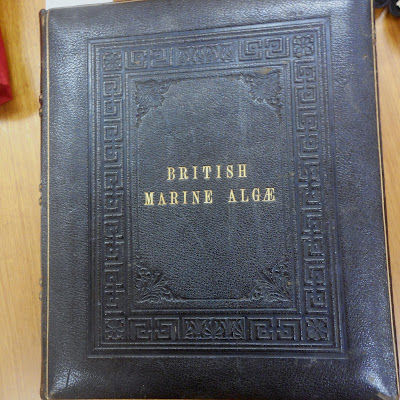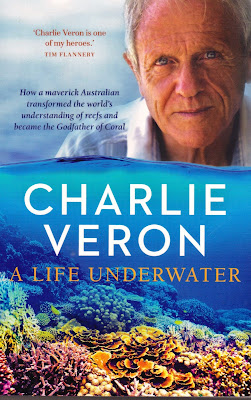As a young girl Queen Victoria was an avid collector of seaweed which was dried , pressed and placed in an album. It is highly likely that the young Queen invited Albert to come up and see her pressed seaweed collection , which would have impressed the red-blooded Teuton no end .
During the Victorian era seaweed collecting became popular with women , enabling many to escape the domestic bondage of the times , enjoy strolls along the foreshores , some engaging in scientific research . While the book shown below appears to have been written by a woman , Shirley Hibberd, the author was a man,James, who played a large part in popularising gardening for the masses , collecting seaweed , edited early magazines which dealt with the subjects .
Another collector of seaweed was novelist, poet and journalist Mary Ann Evans , sub editor of The Westminster Review , whose pen name was George Eliot . She not only pressed seaweed but a philosopher to her bosom . Seaweed caused Wordsworth to wax lyrical ; seaweed inspired artist and philosopher , William Morris (1834-1896) , of the Arts and Crafts movement , and featured on wallpaper and china .
A prominent "seaweeder " , Margaret Gatty , a children's book author , married to a vicar , took up the hobby while convalescing after childbirth by the seaside at Hastings in l848. Her epic study of the subject , called algology , British Seaweeds, was described and illustrated in 86 coloured plates. A species of Australian algae , Gattya pinella ,was named after her .
A prominent "seaweeder " , Margaret Gatty , a children's book author , married to a vicar , took up the hobby while convalescing after childbirth by the seaside at Hastings in l848. Her epic study of the subject , called algology , British Seaweeds, was described and illustrated in 86 coloured plates. A species of Australian algae , Gattya pinella ,was named after her .
In the Special Collections section of the Eddie Koiki Mabo Library , James Cook University , Townsville , is the above impressive 1884 album containing exquisite full page pressed seaweed. It is a presentation copy with an inscription that reads :
The address ,"Simla " in Paignton, Devon , raises a possible link with India , Simla being the place where the British went to escape the hot Indian summers during the time of the Raj . A quick check showed that Annie Slade, born 1861, had been the daughter of a tea merchant , who on his death in 1917 left an estate valued at more than 9000 pound ; Simla House , at one time occupied by the Bailey family , was bombed by the Germans during WWll. No readily available info could be found about the recipients of the collection , the Slatters.
Going on the title of the album it at first raised the possibility that it could have been so named by a scientist who came into possession of the collection at a later date , or else Annie was deeply scientific in her approach to seaweed collecting , not only naming each specimen but the place from whence it was gathered , Torquay one source .
The volume came from the library of English marine zoologist Sir Maurice Yonge (1899-1986) , who led the Great Barrier Reef expedition of 1928-1929, one of the first scientists to undertake rigorous exploration of reef organisms in the field . The collection was bought by Townsville's Australian Institute of Marine Science , later transferred to the university library . Late in life , Sir Maurice and his wife visited Townsville .
Acquisition of the invaluable library is covered in amusing detail in the recently published book , A Life Underwater , by Doctor Charlie Veron , the Australian called the Godfather of Coral , one of Tim Flannery's heroes and likened to Charles Darwin by Sir David Attenborough .
The volume came from the library of English marine zoologist Sir Maurice Yonge (1899-1986) , who led the Great Barrier Reef expedition of 1928-1929, one of the first scientists to undertake rigorous exploration of reef organisms in the field . The collection was bought by Townsville's Australian Institute of Marine Science , later transferred to the university library . Late in life , Sir Maurice and his wife visited Townsville .
Acquisition of the invaluable library is covered in amusing detail in the recently published book , A Life Underwater , by Doctor Charlie Veron , the Australian called the Godfather of Coral , one of Tim Flannery's heroes and likened to Charles Darwin by Sir David Attenborough .
More about the interesting and vital contents of this book , the author , the Great Barrier Reef , climate change and Adani upcoming .






